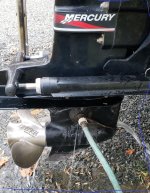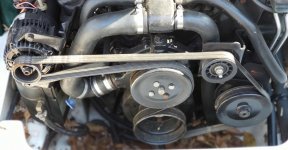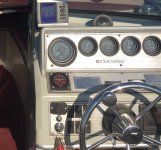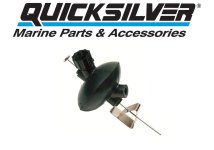A few months ago, I changed the serpentine belt on my 2001 MerCruiser 5.0 260hp EFI. It is sitting on the trailer and the "ear muffs" are connected to a garden hose. This is the first time I've started the engine since that change.
It fired up nicely and I set the RPMs to 1100. Water is spraying all over the place, mostly because the rubber cups are not making a good seal against the sterndrive body.
The temperature gauge took 5-10 minutes to get up to 170F, then settled back and stabilized at about 165. I assume this is because the thermostat opened.
I am hearing a mid-pitched whining sound coming from the engine but I am unable to determine the exact source. It could be the water pump, alternator, belt tensioner, or something else.
The battery gauge stayed a little over 12V, maybe 12.7
My questions:
Thanks for any guidance you can offer.
It is beginning to get cold in Virginia. I need to get some pink stuff in there.

It fired up nicely and I set the RPMs to 1100. Water is spraying all over the place, mostly because the rubber cups are not making a good seal against the sterndrive body.
The temperature gauge took 5-10 minutes to get up to 170F, then settled back and stabilized at about 165. I assume this is because the thermostat opened.
I am hearing a mid-pitched whining sound coming from the engine but I am unable to determine the exact source. It could be the water pump, alternator, belt tensioner, or something else.
The battery gauge stayed a little over 12V, maybe 12.7
My questions:
- How do I know if I have the correct tension on my serpentine belt?
- Could a belt that is too tight, or not tight enough, cause my whining sound?
- How can I diagnose the source of the whining sound? Might it be normal?
- Are my battery and temp readings fairly typical?
- Are the earmuffs supposed to seal so that no water sprays out? Do I need to buy a new set?
- If the earmuffs are sealed tightly against the sterndrive body, where is the water supposed to exit?
Thanks for any guidance you can offer.
It is beginning to get cold in Virginia. I need to get some pink stuff in there.





